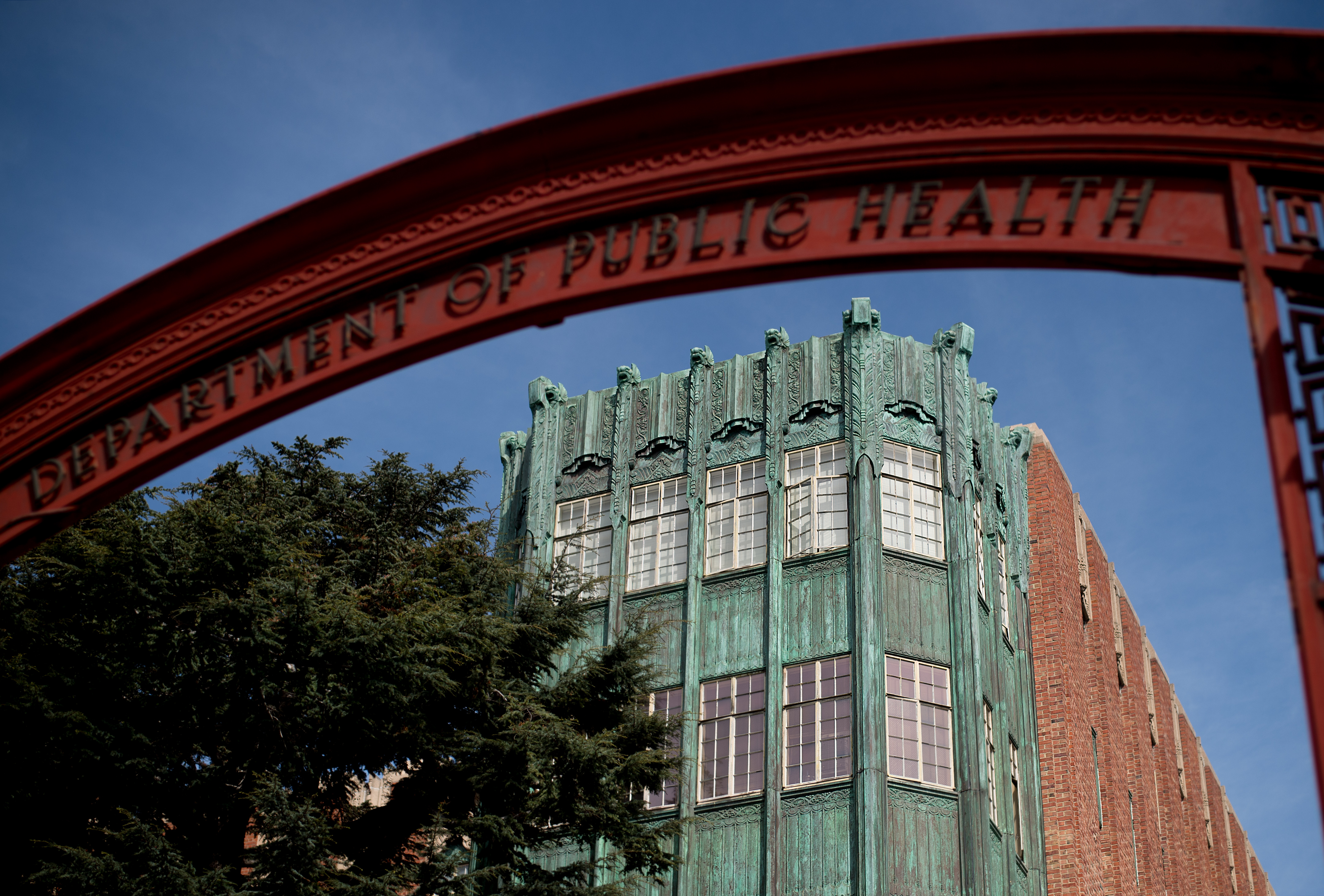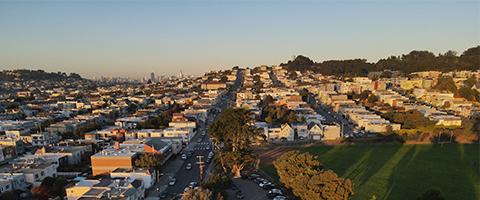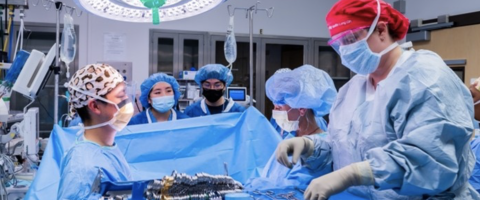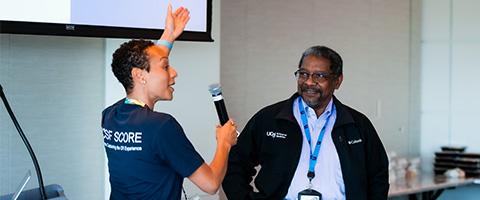Our department is fortunate to be part of an institution that is committed to addressing disparities in health and healthcare. The costs to our society are high; disparities lower the quality of life and negatively impact life expectancy for many. Our department philosophy is aligned with campus leadership in the areas of recruiting and retaining individuals with a desire to serve culturally diverse and medically underserved populations and are committed to working on issues related to diversity, equity, and inclusion. Our department seeks scholars from disadvantaged* backgrounds to better reflect the diversity of the population we serve in the San Francisco Bay Area. We further recognize that successfully recruiting people to join our enterprise is not the end of the story. As eloquently stated in the UCSF Principles of Community, it is also critical that we provide an environment in which all individuals in our workforce and trainee programs experience a professional, supportive, collaborative, and open environment and have the opportunity to thrive. We are dedicated to the ongoing pursuit of these goals.
Diversity, Equity and Inclusion and Health Equity Training
Not confined to low- and middle-income countries, well-known health and societal inequities exist worldwide, yet many North American anesthesiology training programs do not formally address these issues [1]. Furthermore, anesthesiologists’ essential roles in perioperative, pain and critical care provide them a unique opportunity to help identify systemic differences and drive the change to address them [2].
That’s why, in support of the UCSF mission to advance health worldwide, we’re proud to be working with our Center for Health Equity in Surgery and Anesthesia (CHESA) to develop and implement formal diversity, equity and inclusion (DEI) as well as health equity (HE) curricula within the anesthesia, general surgery, and orthopaedic surgery residency training programs.
Diversity, Equity and Inclusion Curriculum
Tailored for the specific work and training environments of attendees, and created by Odinakachukwu Ehie, MD, FASA, Vice Chair for Diversity, Equity and Inclusion in the Department of Anesthesia and Perioperative Care, our DEI curriculum examines race and culture in what Ehie calls “very curated safe spaces. [3]” Over the course of four two-hour sessions, small groups participate in interactive exercises that uncover unconscious biases and explore power - privilege dynamics. Trainees learn about research that demonstrates first how these biases cause harm – and, second, how heightened awareness can mitigate the harm [3]. Implemented in our training programs, residents participate in the first three workshops in the series during their CA1 year, completing the fourth workshop, developed with the help of Professor Rondall Lane, MD, MPH, as CA2s. The curriculum has also been implemented for faculty and staff in the Department of Anesthesia and Perioperative Care.
*“ Disadvantaged” is defined as “from a family with an annual income below established low-income thresholds and/or a social, cultural, or educational environment such as those found in certain rural or inner-city environments that have demonstrated presented barrier to navigating admissions or access to health science careers.”
Session 1: Unconscious Bias
| Session 1 Learning Objectives | |
|---|---|
|
Unconscious Bias Workshop Materials
| Session 1 Resources |
|---|
|
The Harvard Implicit Association Test (IAT) [6] further increases the test-takers’ self-awareness of their implicit biases. The discussion space built into our workshop allows them to process their immediate feelings in a safe manner and explore the relationship of their findings to instances of bias they’ve witnessed in their educational training and workplace. Facilitators also push for further reflection on how implicit biases and structural racism have manifested in their education and training. Having taken the Black-White Implicit Association Test as part of medical school was found to be a statistically significant predictor of decreased implicit racial bias in medical students from their first to last semester. The IAT has also been demonstrated to be a much better predictor of discrimination towards a racial group than self-reported attitudes, and has been a consistent predictor of a wider range of judgments, behaviors, and choices. |
Session 2: Allyship
| Session 2 Learning Objectives |
|---|
|
| Authentic Allyship | Performative Allyship |
|---|---|
|
|
| White Fragility | Weaponized White Fragility |
|---|---|
|
|
Session 3: Microaggressions
| Session 3 Learning Objectives |
|---|
|
| Indirect Strategies for Addressing Microaggressions |
Direct Strategies for Addressing Microaggressions |
|---|---|
|
|
MedEdPortal Publication: Tools for addressing microagressions
Session 4: Advanced Unconscious Bias and Tools to Address It
| Session 4 Learning Objectives |
|---|
|
| Session 4 Resources |
|---|
|
Health Equity Curriculum
 Our interactive, longitudinal health equity curriculum trains surgery and anesthesia residents of all levels to recognize and address perioperative disparities in clinical practice. Split into four modules and including a monthly Health Equity / DEI journal club, community engagement, faculty mentorship, and hands-on learning are the hallmarks of the HE curriculum. Learn more on the CHESA website.
Our interactive, longitudinal health equity curriculum trains surgery and anesthesia residents of all levels to recognize and address perioperative disparities in clinical practice. Split into four modules and including a monthly Health Equity / DEI journal club, community engagement, faculty mentorship, and hands-on learning are the hallmarks of the HE curriculum. Learn more on the CHESA website.
References
- Wollner E, Law T, Sullivan K, Lipnick MS. Why every anesthesia trainee should receive global health equity education. Can J Anaesth. 2020 May 20.
- Ehie O, Toledo P, Wright C, Adams J. What Is the Role for Anesthesiologists and Anesthesia Practices in Ensuring Access, Equity, Diversity, and Inclusion? ASA Monitor. 2021 Oct;85: 45-48.
- Schwartz, A. In Challenging Times, Ehie Steers Department’s DEI Efforts, Gains. https://anesthesia.ucsf.edu/news/challenging-times-ehie-steers-department’s-dei-efforts-gains
- Building a Health Equity Curriculum for Anesthesia and Surgery Residents. https://anesthesia.ucsf.edu/news/building-health-equity-curriculum-anesthesia-and-surgery-residents
- Ehie O. Developing a Diversity, Equity, and Inclusion Curriculum for Anesthesia Learners. International Anesthesia Research Society (IARS) Webinar Series Workshop. https://iars.org/iars-webinar-series/?utm_source=header
- Implicit Association Test: https://implicit.harvard.edu/implicit/takeatest.html
- Diversity Activity Resource Guide. University of Houston. www.uh.edu
- Morin, Rich. 2015. “Exploring Racial Bias Among Biracial and Single-Race Adults: The IAT.” Pew Research Center, Washington, D.C.: August 19, 2015.
- Green et al. Implicit bias among physicians and its prediction of thrombolysis decisions for black and white patients. Journal of General Internal Medicine. 2007; Sep;22(9):1231-1238. https://www.ncbi.nlm.nih.gov/pmc/articles/PMC2219763/#
- Atcheson S. Allyship – The key to unlocking the power of diversity. Forbes https://www.forbes.com/sites/shereeatcheson/2018/11/30/allyship-the-key-to- unlocking-the-power-of-diversity/#5eed122349c6
- Brown KT. Perceiving allies from the perspective of non-dominant group members: Comparisons to Friends and Activists. Current Psychology 2015;34:713-722. https://doi.org/10.1007/s12144-014-9284-8
- Ostrove JM, Brown KT. Are allies who we think they are?: A comparative analysis. Journal of Applied Social Psychology 2018;48(4):195-204. https://onlinelibrary.wiley.com/doi/full/10.1111/jasp.12502
- Brock University. Human Rights and Equity. Be an Active-Ally to Those Experiencing Racial Injustice. https://brocku.ca/human-rights/active-ally/
- Parks S, Birtel MD, Crisp RJ. Evidence That a Brief Meditation Exercise Can Reduce Prejudice Toward Homeless People. Social Psychology. 2014;45(6):4580465. https://econtent.hogrefe.com/doi/10.1027/1864-9335/a000212
- Lueke A, Gibson B. Brief Mindfulness Meditation Reduces Discrimination. Psychology of Consciousness: Theory, Research and Practice. 2016;3(1): 34-44. https://psycnet.apa.org/record/2016-06826-001
- Burgess D, van Ryn M, Dovidio J, Saha S. Reducing Racial Bias Among Healthcare Providers: Lessons from Social-Cognitive Psychology. J Gen Internal Med. 2007 Jun;22(6):882-7. https://pubmed.ncbi.nlm.nih.gov/17503111/
- Lueke A, Gibson B. Mindfulness Meditation Reduces Implicit Age and Race Bias: The Role of Reduced Automaticity of Responding. Social Psychological and Personality Science. 2014 Nov24;6(3): 284-291. https://journals.sagepub.com/doi/10.1177/1948550614559651
Useful Links
UCSF Office of Diversity and Outreach
UCSF School of Medicine: Differences Matter
LGBT Resource Center
UCSF Medical Student Disability Services
UCSF Principles of Community
Diversity in Graduate Medical Education
Under-Represented Faculty & Senior Fellows in Clinical and Translational Research Awards
C-Change







